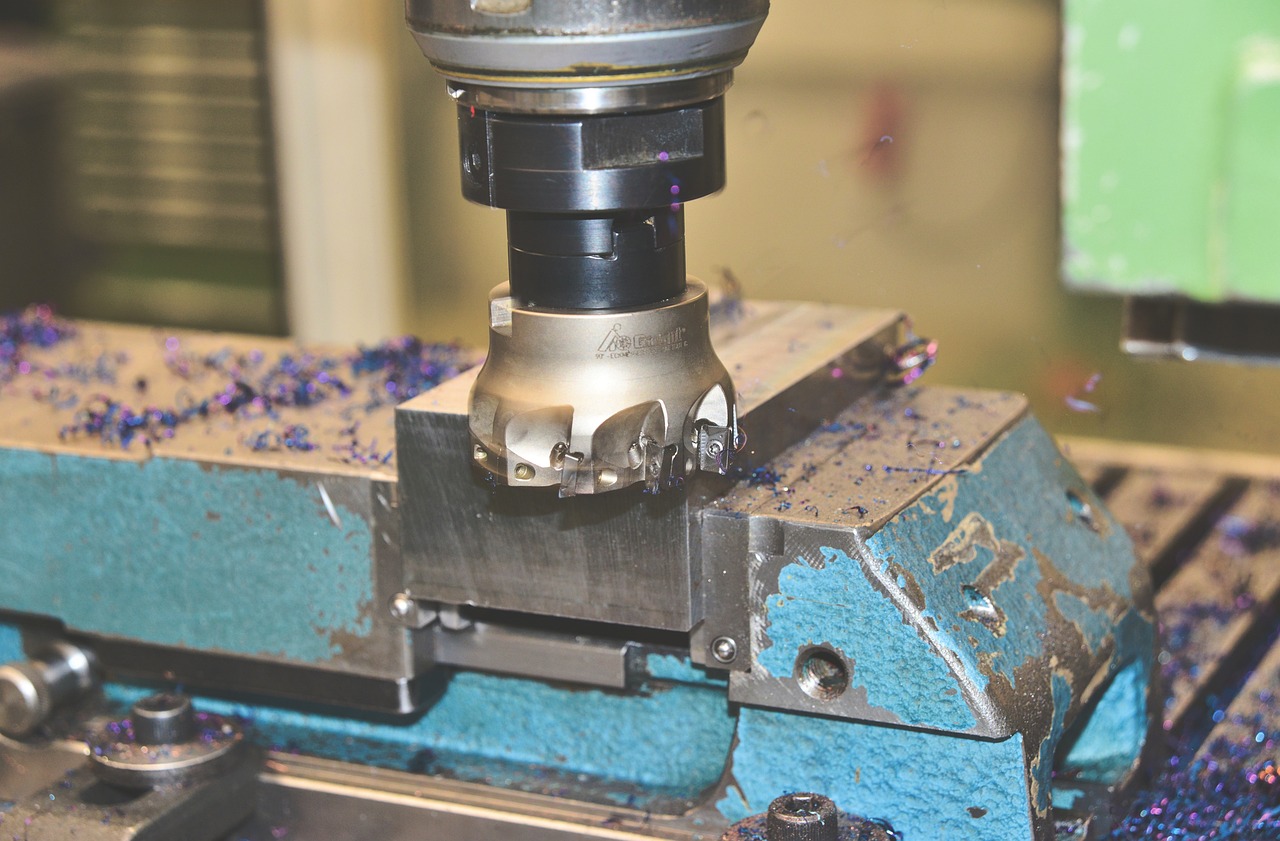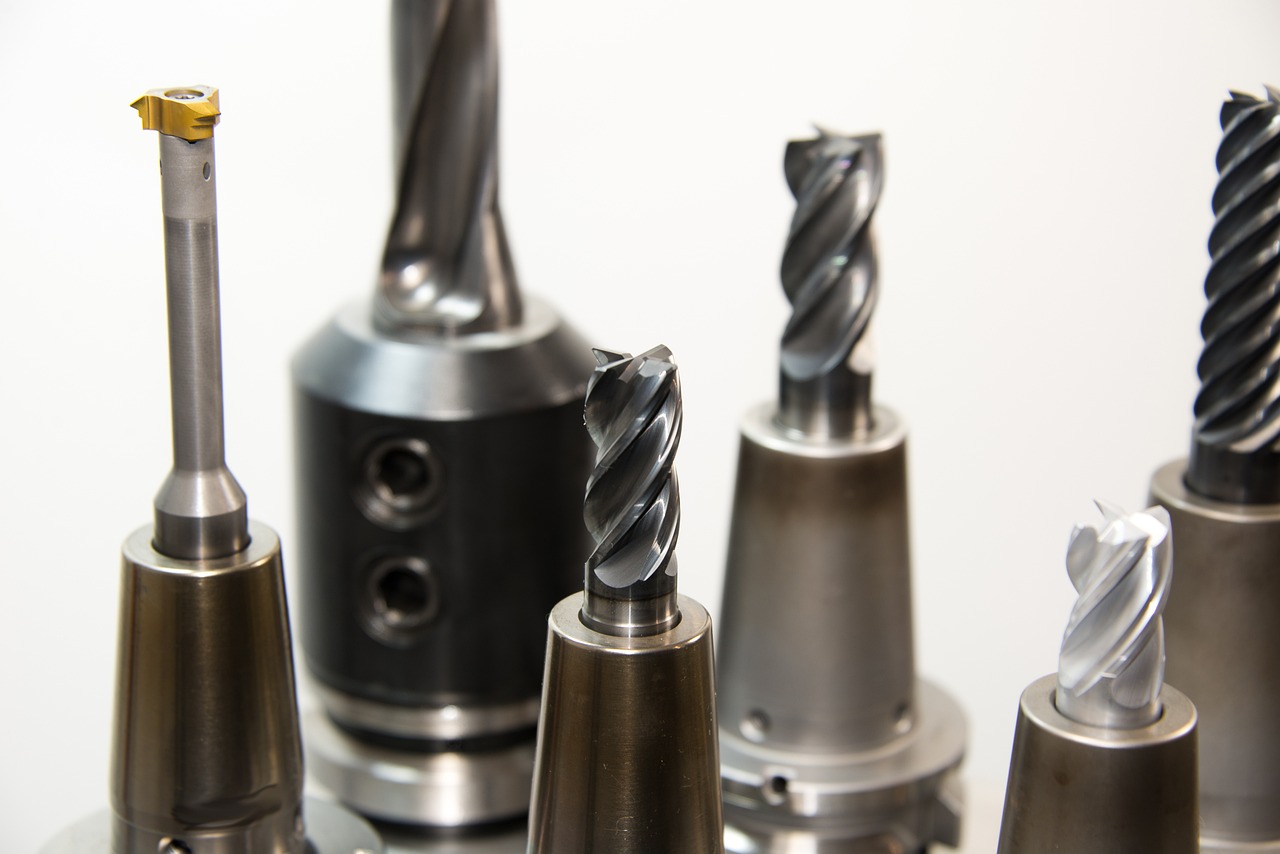CNC machining stands as a swift manufacturing method, transforming digital 3D blueprints into tangible plastic or metal components by strategically removing material. Numerous companies rely on CNC machining services for crafting parts and prototypes, spanning across diverse industries due to its adaptable nature. However, CNC machining encompasses various iterations. Despite sharing a common workflow—software translating digital designs into machine directives for material removal—the machinery for this task varies significantly among different models.
This article explores the fundamental disparities between two such machines: CNC mills and CNC turning (also known as lathe centers).

CNC milling stands as a widely utilized CNC machining service, offering machinists the capability to fabricate a diverse array of CNC machined components. Particularly, prototype companies frequently employ CNC mills to craft functional prototypes on a one-off basis.
In Custom CNC milling, computerized instructions guide the movement of a swiftly rotating cutting tool across three or more axes. As the spinning cutting tool engages with the workpiece, it systematically removes material in a controlled manner. Through a series of passes, the cutting tool shapes the workpiece until it resembles the intended part.
Traditionally, CNC mills secure the workpiece in place, affixing it to the machine bed using a vice. Nevertheless, multi-axis CNC mills may introduce rocking or rotational motions to the workpiece, facilitating a wider range of cutting angles. This capability empowers machinists to produce intricate parts without the need for manual repositioning of the workpiece.
Rapid prototyping service providers favor CNC milling due to its streamlined, end-to-end process and short turnaround times, offering a comprehensive solution for prototype development.

CNC turning is a manufacturing process in which bars of material are held in a chuck and rotated while a tool is fed to the piece to remove material to create the desired shape. CNC stands for Computer Numerical Control, which means that the turning operations are controlled by a computer. This allows for high precision and repeatability in the manufacturing of parts.
In CNC turning, the cutting tool can be moved in multiple axes, allowing for the creation of a variety of shapes, including cylindrical and conical shapes, as well as complex external and internal geometries. The process can be used to produce parts from a wide range of materials, including metals, plastics, and composites.
The advantages of CNC turning such as plastic cnc turning include high accuracy, consistent production quality, and the ability to produce complex shapes with tight tolerances. It is widely used in various industries, including automotive, aerospace, medical, and electronics, for the production of components such as shafts, bushings, and housings.
CNC turning machines, also known as lathes, can be equipped with multiple tools and can perform various operations such as cutting, drilling, and threading in a single setup, which reduces the production time and increases efficiency. Advanced China cnc machining turning centers may also have live tooling capabilities, allowing for additional operations like milling and drilling to be performed without the need for a secondary operation, further enhancing their versatility and productivity.
Both CNC milling and CNC turning are computer numerically controlled (CNC) subtractive manufacturing processes, but they differ in their approaches to shaping materials. Here's a breakdown of their key distinctions:
CNC Milling: The cutting tool moves across a stationary workpiece, held in place by a vise or fixture. This allows for machining various shapes, including flat surfaces, angles, curves, and pockets.
CNC Turning: The workpiece rotates while the cutting tool remains stationary. This process excels at creating cylindrical shapes with internal and external features like holes, threads, and grooves.
CNC Milling: More versatile for machining complex geometries with multiple axes of movement, including 3D shapes, intricate features, and non-rotational designs.
CNC Turning: Primarily suited for cylindrical shapes and features like holes, threads, and tapers. Offers limited capabilities for non-rotational geometries.
CNC Milling: Diverse applications in various industries, including aerospace, automotive, medical, electronics, and general engineering. Ideal for complex prototypes, custom parts, and low-volume production.
CNC Turning: Widely used in manufacturing industries like automotive, aerospace, and machine tools. Perfect for high-volume production of rotational parts like shafts, gears, and bushings.
Setup Time: CNC milling often requires more complex setup due to the varied toolpaths and geometries involved.
Material Waste: CNC turning typically generates more material waste in the form of chips due to the rotational nature of the process.
Tooling: Milling utilizes a wider range of cutting tools for different purposes, while turning primarily uses lathe tools specific to shaping cylindrical forms.

When deciding between CNC milling and CNC turning for your manufacturing needs, several factors should be considered:
Part Geometry: If your component features intricate shapes, holes, or slots, CNC milling may be the preferred choice due to its ability to maneuver cutting tools along multiple axes. Conversely, if your part is primarily cylindrical or features simple geometries, CNC turning such as plastic cnc turning might be more suitable.
Material Type and Size: Certain materials may be better suited for either milling or turning processes. CNC milling such as aluminium cnc milling is versatile and can handle various materials, including metals, plastics, and composites. On the other hand, CNC turning is particularly efficient for producing cylindrical parts from round stock materials. Additionally, consider the size of your part; CNC milling machines can accommodate larger workpieces compared to CNC turning machines.
Surface Finish Requirements: If your component requires a smooth surface finish or tight tolerances, CNC turning may offer advantages due to the continuous rotation of the workpiece, resulting in consistent surface finishes. However, modern CNC milling machines equipped with high-speed spindles and precision tooling can also achieve excellent surface finishes.
Production Volume: The volume of parts you need to produce can influence your choice between CNC milling and turning. CNC turning is often faster for producing large quantities of cylindrical parts due to its continuous rotational motion. Conversely, CNC milling may be more efficient for smaller batch sizes or prototypes, thanks to its versatility and ability to produce complex shapes in a single setup.
Cost Considerations: Evaluate the costs associated with each machining process, including setup time, tooling expenses, and machine utilization. While CNC turning machines tend to have lower setup times and simpler tooling requirements, CNC milling machines offer greater flexibility and may be more cost-effective for certain applications.
By carefully considering these factors and assessing your specific requirements, you can make an informed decision between CNC milling and CNC turning to optimize your manufacturing process and achieve the desired results.
In conclusion, CNC milling and turning are indispensable techniques in modern manufacturing, each offering unique advantages and applications. Whether you're fabricating intricate components or producing cylindrical parts in bulk, understanding the nuances between CNC milling and turning empowers you to make informed decisions for your projects. By leveraging the precision, efficiency, and versatility of CNC machining, manufacturers can achieve unparalleled quality and productivity in their operations.